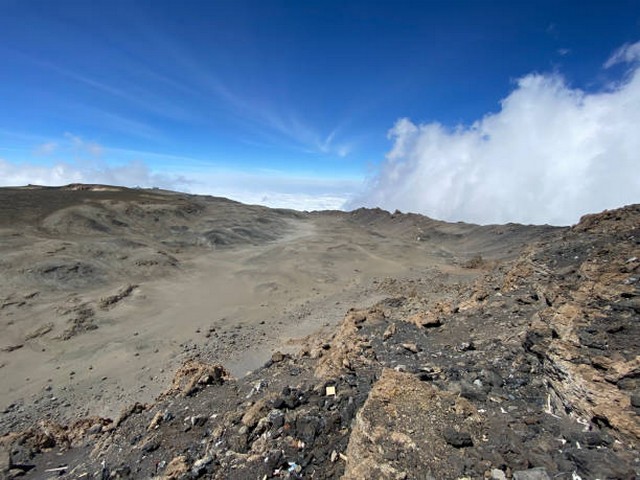Wildlife Photography Tips for Kilimanjaro Trekkers: Capture the Majesty of Nature
Embarking on a trek up Mount Kilimanjaro isn’t just a physical challenge; it’s a journey through some of the most stunning landscapes and diverse wildlife habitats on Earth. For photography enthusiasts, it presents a unique opportunity to capture breathtaking images of wildlife in their natural surroundings. At Kilimanjaro Centre for Trekking and Ecotourism (KCTE), we understand the magnetic pull of Kilimanjaro’s natural beauty and the thrill of immortalizing these moments through a lens.
In this blog post, we provide essential wildlife photography tips designed specifically for trekkers on Africa’s highest peak. Whether you’re a seasoned photographer or someone who just loves to snap photos, these tips will enhance your skills and enrich your trekking experience.
Understanding the Terrain and Wildlife of Kilimanjaro
Before diving into camera settings and techniques, it’s critical to understand the environment of Kilimanjaro. The mountain’s ecosystems range from lush rainforests to alpine deserts, each hosting different species of wildlife. Familiarize yourself with the animals you might encounter, such as the elusive Colobus monkeys, majestic elephants, and vibrant bird species like the Malachite Sunbird.
Best Times for Wildlife Photography on Kilimanjaro
To capture the best wildlife shots, timing is everything. Early mornings and late afternoons are golden hours for photographers due to the soft, diffused light. Moreover, these times often coincide with animals being more active, giving you a greater chance to capture dynamic images.
Essential Gear for Wildlife Photography
Choosing the Right Camera and Lenses
A good DSLR or mirrorless camera with a telephoto lens is essential for wildlife photography. A lens with at least 200mm focal length is advisable, as it allows you to maintain a safe distance from wildlife while still capturing detailed shots. Don’t forget a durable, lightweight tripod to stabilize your shots, especially in low light conditions.
Packing Smart: Camera Accessories and Protection
Bring extra batteries and memory cards, as cold temperatures can drain battery life quickly and opportunities for recharging can be limited. Protect your gear from Kilimanjaro’s varying climate with weather-sealed bags and silica gel packs to absorb moisture.
Photography Techniques for Capturing Kilimanjaro’s Wildlife
Mastering the Art of Patience and Positioning
Wildlife photography requires patience. Spend time observing the behavior of animals and anticipate their next move to get the best shots. Position yourself with the sun behind you to maximize light on your subject, enhancing clarity and color saturation in your photos.
Understanding Camera Settings for Dynamic Wildlife Shots
- Aperture: Use a wider aperture (lower f-number) to focus on the animal while keeping the background blurred, highlighting your subject.
- Shutter Speed: To capture fast-moving wildlife, adjust your shutter speed to at least 1/500th of a second. This helps to freeze motion, avoiding blurry images.
- ISO: Keep the ISO as low as possible to reduce grain, but don’t hesitate to increase it in lower light conditions to ensure your shutter speed is sufficiently fast.
Ethical Wildlife Photography Practices
As trekkers and photographers, it’s our duty to respect the natural habitat and wellbeing of wildlife. Always maintain a safe and respectful distance, use natural light to your advantage, and avoid using flash as it can startle animals.
Post-Processing Tips
Post-processing is a powerful tool to enhance your wildlife photographs. Adjust exposure, contrast, and color balance to bring out the best in your images. Remember, the goal is to enhance, not overly alter the photo’s authenticity.
Join Us at Kilimanjaro Centre for Trekking and Ecotourism (KCTE)
Ready to embark on this incredible adventure and put these photography tips to the test? Book your Kilimanjaro climb with us at Kilimanjaro Centre for Trekking and Ecotourism (KCTE). We provide expert guides, comprehensive trekking services, and dedicated support to ensure you have a memorable and safe experience, capturing the wonders of Kilimanjaro through your lens.
FAQs: Capturing Kilimanjaro’s Wildlife Through Your Lens
What wildlife can I expect to see on Kilimanjaro?
Expect to encounter a variety of wildlife, including monkeys, birds, and larger animals such as buffaloes and elephants in the lower forest zones.
What is the best season for wildlife photography on Kilimanjaro?
While wildlife can be photographed year-round, the dry seasons (January to March and June to October) offer clearer skies and more predictable animal behavior patterns.
How can I ensure the safety of both the wildlife and myself while photographing?
Always keep a safe distance, use zoom lenses to capture close-up shots, and stay on marked trails to minimize disturbances to natural habitats.
Conclusion: Capture the Spirit of Kilimanjaro
Photographing wildlife on Kilimanjaro is not just about the images you take home but the unforgettable experiences you gain. Each photo tells a story of resilience and beauty, emblematic of the majestic Kilimanjaro itself. Whether you’re a professional photographer or a trekking enthusiast eager to document your journey, Kilimanjaro offers a canvas like no other.
Embark on this photographic trek with Kilimanjaro Centre for Trekking and Ecotourism (KCTE), where adventure meets conservation, and every snapshot contributes to the preservation of this magnificent mountain’s legacy. Join us, and let Kilimanjaro’s wildlife inspire your next great adventure.




